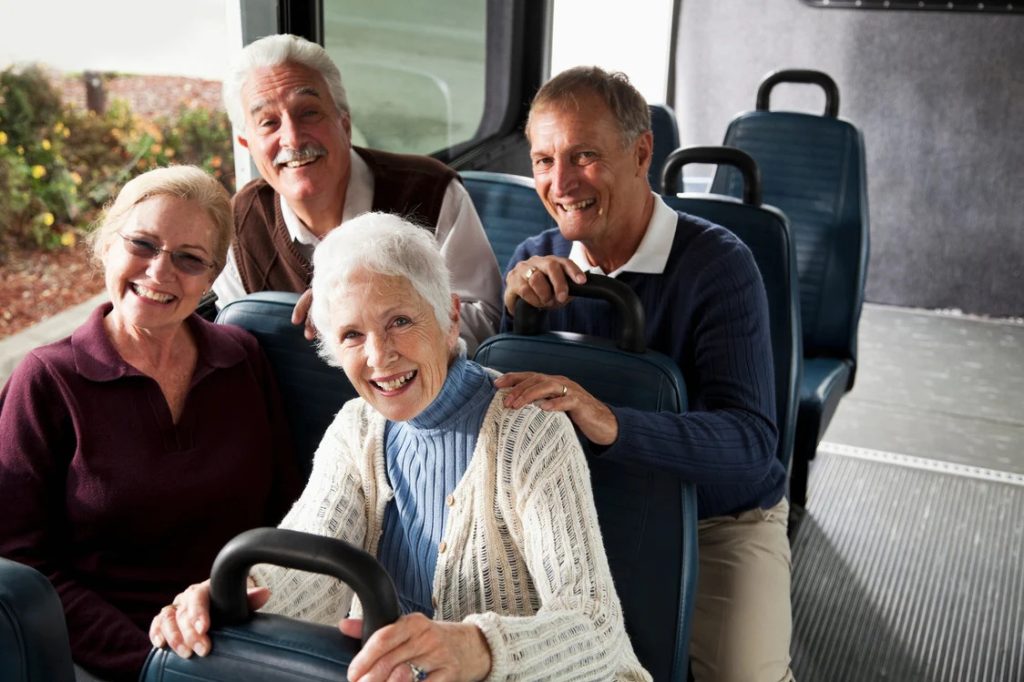Public transportation can be a convenient and cost-effective way for seniors to get around, whether for running errands, visiting friends, or exploring new places. However, it’s important to be aware of potential safety concerns and take steps to protect yourself. This guide provides practical tips to help seniors use public transportation safely and confidently.
Planning Your Trip
Before you head out, it’s important to plan your trip. Knowing your route and schedule in advance can help you avoid confusion and make your journey smoother. Most public transportation systems have websites or apps where you can find route maps, schedules, and fare information. If you’re not comfortable using these tools, ask a friend or family member to help you plan your trip.
Consider the time of day you’ll be traveling. It’s generally safer to use public transportation during daylight hours when there are more people around. If possible, try to avoid traveling late at night or during rush hour when buses and trains can be crowded.
Make sure you have everything you need before you leave. This includes your identification, fare or transit card, and any necessary medications. It’s also a good idea to bring a fully charged mobile phone for emergencies.
Staying Alert and Aware
One of the most important aspects of staying safe on public transportation is being alert and aware of your surroundings. Pay attention to what’s happening around you and avoid distractions like looking at your phone or reading. Keep your belongings close and secure, and be mindful of pickpockets, especially in crowded areas.
When you’re waiting for your bus or train, stand in a well-lit area and stay close to other passengers. Avoid isolated areas, particularly at night. If you feel uncomfortable or unsafe, move to a different location or ask for help from transit staff.
On the bus or train, try to sit near the driver or conductor where it’s generally safer. If these seats are not available, sit near other passengers. Avoid sitting in empty or isolated sections of the vehicle.
Protecting Your Belongings
Keeping your belongings secure is essential when using public transportation. Use a bag that zips closed and keep it in your lap or close to your body. Avoid placing bags or valuables on the seat next to you or in the overhead compartments where you can’t see them.
If you carry a wallet, keep it in a front pocket or a secure, zippered bag. Be cautious when using your phone or other electronic devices in public, as these items can attract attention from thieves.
When entering or exiting the bus or train, hold onto your belongings tightly and be aware of your surroundings. Pickpockets often target passengers during these moments of transition, when people are distracted and moving quickly.
Using Mobility Aids
If you use a mobility aid like a cane, walker, or wheelchair, it’s important to know how to safely use public transportation with these devices. Many transit systems are equipped to accommodate passengers with mobility aids, but it’s helpful to familiarize yourself with the specific procedures and features of your local system.
When boarding a bus, let the driver know if you need assistance or if you require the ramp or lift. Most drivers are trained to help passengers with mobility aids and will be happy to assist you. On trains, look for designated areas for wheelchair users, which often have more space and securement straps.
If you have difficulty standing for long periods, consider requesting a priority seat near the front of the bus or train. These seats are reserved for seniors and passengers with disabilities. Don’t be afraid to ask for a seat if you need one.
Staying Safe at Bus Stops and Stations
Waiting at bus stops and train stations can present unique safety challenges. Choose well-lit, busy stops whenever possible, and avoid waiting alone in isolated areas. If you’re unfamiliar with the area, ask a friend or family member to accompany you, especially if you’ll be waiting for a long time.
Be cautious when crossing streets to reach your stop or station. Use crosswalks and pedestrian signals, and make sure drivers see you before you cross. If you feel unsafe at any point, look for transit staff or security personnel for assistance.
While waiting, keep an eye on the schedule and watch for your bus or train. Have your fare or transit card ready so you can board quickly and smoothly. If your bus or train is delayed, stay patient and alert, and be mindful of your surroundings.
Interacting with Others
Interacting with other passengers and transit staff can enhance your safety and make your journey more pleasant. Don’t hesitate to ask for help if you need directions or assistance. Most people are happy to help, and transit staff are trained to assist passengers.
Trust your instincts when it comes to interactions with others. If someone makes you feel uncomfortable, move to a different part of the vehicle or station. If you feel threatened or harassed, report the behavior to the driver, conductor, or transit security.
It’s also important to be considerate of other passengers. Give up your seat for those who may need it more, and be mindful of noise levels and personal space. Positive interactions can make public transportation a more enjoyable experience for everyone.
Dealing with Emergencies
Knowing how to handle emergencies is crucial when using public transportation. Familiarize yourself with the emergency procedures for your local transit system. This might include knowing where emergency exits are located, how to contact transit staff, and what to do in case of an accident or medical emergency.
If you experience a medical emergency, don’t hesitate to ask for help from other passengers or transit staff. Many buses and trains are equipped with emergency communication systems that allow you to alert the driver or conductor.
In the event of a security threat, such as suspicious behavior or an unattended package, report it to transit staff or security immediately. Stay calm and follow the instructions of transit authorities. Your safety is the top priority, and prompt action can help prevent incidents.
Staying Informed
Staying informed about your local transit system can enhance your safety and confidence. Sign up for alerts or notifications from your transit provider to stay updated on schedule changes, delays, and other important information. Many transit systems also have social media accounts where they post real-time updates.
It’s also helpful to stay informed about the areas you’ll be traveling to and from. Know the location of nearby landmarks, emergency services, and safe places where you can seek help if needed. Having this information can provide peace of mind and help you navigate unfamiliar areas more confidently.
Practicing Good Hygiene
Practicing good hygiene is important when using public transportation, especially during flu season or other health outbreaks. Carry hand sanitizer and use it after touching surfaces like handrails, seats, and fare machines. Wash your hands thoroughly when you reach your destination.
Wearing a mask can also help protect you and others from respiratory illnesses. If you’re feeling unwell, consider postponing your trip or using alternative transportation to avoid spreading illness to others.
Conclusion
Using public transportation can be a safe and enjoyable way for seniors to stay active and connected. By planning your trips, staying alert, protecting your belongings, and knowing how to handle emergencies, you can travel with confidence. Embrace the convenience and independence that public transportation offers while taking the necessary steps to ensure your safety. With these tips in mind, you can make the most of your journeys and enjoy the benefits of public transportation.

